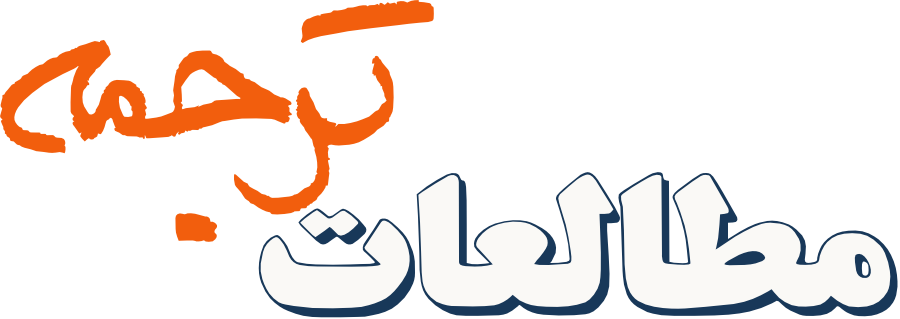م مضامين و گرايش های مشترك در چهار مدل آموزش ترجمه:
فراتحليل كيفی
چکیده
كاربست رويكردها و مدلهاي آموزش ترجمه در تعليم مترجمان شايسته نقش بسزايي دارد. در اين راستا ترجمهپژوهان بسياري با تلفيق نظريههاي خود با نظريههای يادگيری سعی دارند در زمينۀ آموزش ترجمه در سطح دانشگاه به رويكردهای جديدتری نايل شوند. اگرچه پژوهشهای مختلفی در زمينۀ كاربرد اصول و روشهای تدريس ترجمه صورت گرفته وليكن يافتهها و بينشهای حاصل از اين گونه پژوهشهای منفرد و تعميم نيافتنی بهتنهايی قادر به حل اين مسئله نبوده است. اين در حالی است كه تجميع دانش از طريق اين يافتهها در عين اينكه باعث تحكيم بنيان علم میشود، به فهم جامعی از مسئله آموزش ترجمه نيز میانجامد. فراتحليل يك روش بسيار مؤثر در تجميع دانش در حوزههای علمی مختلف است. با اين روش، پژوهشهای پراكنده در يك تصوير بزرگتر و تعميم يافتنی تری ادغام میشوند. مطالعۀ پيش رو در راستای تحليل يافتههای چهار مورد از پژوهشهايی است كه بهصورت معناداری انتخاب و در شمول اين تحليل قرارگرفتهاند و پيكرۀ تحقيقی را تشكيل دادهاند. پژوهشهای انتخابی در اين فراتحليل كيفی بهصورت جمله به جمله بررسی و كدگذاری موضوعی شده تا موضوعات مشترك و الگوهای غالب بر آنان مشخص شوند. نتايج حاصل حاكی از اينست كه علی رغم مواضع معرفت شناختی متفاوت، اين پژوهشها از موضوعات مشتركی برخوردارند كه پيوستگی و ارتباط معناداری بين آنها وجود دارد. نتايج بهدست آمده میتواند مباحث مرتبط با آموزش ترجمه را وسعت داده، در توسعه و تعيين راهبردهای مؤثر آموزش نقش بسزايی داشته باشد.
کلمات راهنما:
آموزش ترجمه، تحليل موضوعی كيفی، فراتحليل، كدگذاری، مضامينمراجع
Anvarhaghighi, M. (2021). Translation pedagogy: A Reflective-cooperative Model for Learning Translator Competence in University Classes (unpublished doctoral Dissertation). Allameh Tabataba’i University, Tehran, Iran.
Aguinis, H., Gottfredson, R., & Wright, T. (2011b). Best-practice recommendations for estimating interaction effects using meta-analysis. J Organ Behav, 32(8), 1033–1043.
Baumgarten, S., Klimkowski, K., & Sulivan, C. (2010). Towards a Transgressionist Approach: Critical-Reflexive Translator Education. In Viktorija Bilic et al (Ed.), T21N-Translation in Translation. (pp. 1–33). Wissenschaftlicher: Verlag Trier.
Braun, V., & Clarke, V. (2006). Using thematic analysis in psychology. Qualitative Research in Psychology, 3, 77–101.
Delisle, J. (1993/2003). La traduction raisonnée. Manuel d’initiation à la traduction professionnelle de l’anglais vers le français. Ottawa: Presses de l’Université d’ Ottawa.
Divan, A., Ludwing, L., Matthews, K., Motley, P., & Tomlienovic-Berube, a. (2017). A survey of research approaches utilised in The Scholarship of Learning and Teaching publications. Teaching&Learning Inquiry, 5(2), 16.
Glaser, B. G., & Strauss, A. (1965). Awareness of dying. Chicago: Aldine Publishing Company.
Glass, G. (2015). Meta-analysis at middle age: a personal history. Res Synth Methods, 6(3), 221–231.
Gonzalez Davies, M. (2004). Multiple Voices in the Translation Classroom. Amsterdam: John Benjamins.
Göpferich, S. (2008). Towards a model of translation competence and its acquisition: the Longitudinal study Trans Comp. Retrieved June 2019, from http://gams.uni-graz.at/fedora/get/container:tc/bdef:Container/get
Gouadec, D. (2007). Translation as a Profession. Amsterdam & Philadelphia: John Benjamins.
Gurevitch, J., Koricheva, J., Nakagawa, S., & Stewart, G. (2018). Meta-analysis and the science of research synthesis. Nature, 555(7695), 175–182.
Hönig, H. G. (1998). Ubersetzung (therapeutisch vs. diagnostisch). In M. Snell-Hornby, P. Kussmaul, & P. Schmitt (Eds.), Handbook of Translation (pp. 378–381). Tubingen: Stauffenburg.
Hoon, C. (2013). Meta-synthesis of qualitative case studies: an approach to theory building. Organ Res Methods, 16(4), 522–556.
Hunter, A., Murphy, K., Grealish, A., Casey, D., & Keady, j. (2011). Navigating the grounded theory terrain. Nurse Researcher, 18(4), 6–10.
Johnson, D. W., & Johnson, R. T. (1991). Learning together and alone. Englewood Cliffs: Prentice Hall.
Kelly, D. (2005). A Handbook for Translator Trainers: A Guide to Reflective Practice. Manchester: St. Jerome.
Kepes, S., McDaniel, M., Brannick, M., & Banks, G. (2013). Meta-analytic reviews in the organizational sciences: Two meta-analytic schoolson the way to MARS (the meta-analytic Reporting Standards. J Bus Psychol, 28(2), 123–143.
Kiraly, D. (1995). Pathways to Translation. Pedagogy and Process. Kent: Ohio State University Press.
Kiraly, D. (2000). A Social Constructivist Approach to Translator Education: Empowerment from Theory to Practice. Manchester: St. Jerome Publishing.
Kussmaul, P. (1995). Training the Translator. Amsterdam & Philadelphia: John Benjamins.
Malmkjaer, C. (2020). Translation and Creativity. London: Routledge, Taylor & Francis.
Nord, C. (1991). Text Analysis in Translation. Theory, Methodology, and Didactic Application of a Model for Translation-Oriented Text Analysis. Amsterdam: Rodopi.
Nord, C. (1997). Translating as a Purposeful Activity: Functionalist Approaches Explained. Manchester: St. Jerome.
Pöchhacker, F. (2004). Introducing Interpreting Studies. London: Routledge.
Pym, A. (1991). A Definition of Translational Competence Applied to the Training of Translators. In M. Jovanovic (Ed.), Translation: A Creative Profession 12th World Congress of F IT Proceedings (pp. 541–46). Belgrade: Provodilac.
Rauch, A. (2020). Opportunities and threats in reviewing entrepreneurship theory and practice. Entrep Theory Pract, 44(5), 847–860.
Risku, H. (2010). A cognitive scientific view on technical communication and translation: Do embodiment and situatedness really make a difference? Target, 22(1), 94–111.
Robinson, D. (1997b). Becoming a Translator. An Accelerated Course. London: Routledge.
Rosenthal, M. (2016). Qualitative research methods: Why, when, andhow to conduct interviews and focus in pharmacy research. Currents in Pharmacy Teaching and Learning, 8(4), 509–516.
Schön, D. (1987). Educating the Reflective Practitioner. San Francisco: Jossey-Bass.
Downloads
چاپشده
ارجاع به مقاله
شماره
نوع مقاله
DOR
مجوز
حق نشر 2024 Mehrangiz Anvarhaghighi, Farzaneh Farahzad, Hussein Mollanazar

این پروژه تحت مجوز بین المللی Creative Commons Attribution-NonCommercial 4.0 می باشد.
Copyright Licensee: Iranian Journal of Translation Studies. This article is an open access article distributed under the terms and conditions of the Creative Commons Attribution–NonCommercial 4.0 International (CC BY-NC 4.0 license).





